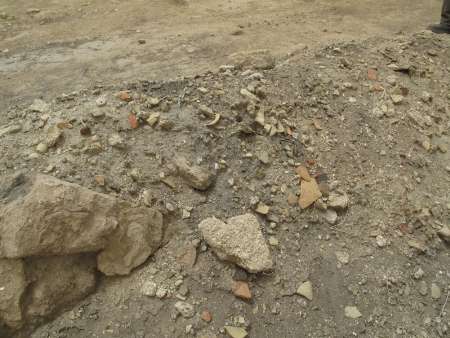
RICHT commented on the briefing of head of the archeological team of historical islands of Siraf and Nayband Hossein Towfiqian of the inspection tour of the team, also comprising experts from the French National Research Center, of Siraf, Nayband and Bataneh historical ports.
He further noted that in the inspection tour he observed destructions and abundant illegal occupation in the valuable historical ports.
“I deem it necessary that while giving informing about the deplorable status of the historical ports as the latest evidence of the historical preservation of the Iranians over the Persian Gulf, I demand all to offer expert and scientific solutions to save the ports from total and perpetual destruction,” Towfiqian said.
The archaeologist noted that Siraf, Nayband and Najiram are considered the most important ports of the Persian Gulf in the eastern coasts of Bushehr Province, between the cities of Dayyer and Nayband Bay.
These great trade centers which in the Sassanid era up to the first centuries after Islam connected the Iranian markets to the markets in East Africa, the Indian Subcontinent and East Asia played an important role in the expression and excellence of culture and civilization of Iran. Siraf as the largest and most important historical port in the Persian Gulf was not only the big trade center but the center for the dialogue of civilizations and the Iranian, East Asian, Arab, Indian and African nations.
Towfiqian continued by saying that the Silk Road from the first centuries BC would transfer commodities of ancient China to the Western and Mediterranean markets and in the extreme conditions of surface routes and unsafe caravans, it relied on the marine routes which continued from China Sea and the Indian Ocean to the Persian Gulf. The Silk Road marine route became a reliable substitute for the safe passage of goods from trade ports of China to the ports of the Persian Gulf such as Siraf, Nayband and Najiram which, after passing through Iran’s central plateau and reconnection to the surface Silk Road, reach the wealthy purchasers of the Western world.
“Now, after 15 centuries of resistance against hardships of the time we have been assigned the task of protecting these historical ports and preserving them for the future generations,' he said.
According to Towfiqian, in the past decades the littoral states of the Persian Gulf by spending millions of dollars and by using subservient European professionals attempted to distort the name and date of the Persian Gulf and published thousands of books and papers in this regard and distributed them in the entire reputable universities and scientific centers.
In recent years, they have even trespassed this limit and brought the territory of their research studies from deserts and the southern coasts of the Persian Gulf into the water and by purchasing advanced research ships entered into new stages of historical distortion of the history of the Persian Gulf.
The archaeologist went on to say that with ever-increasing expansion of the new South and North Pars, the price of land has jumped as such that many of the inhabitants of the area have divided coast lands into smaller pieces and after obtaining legal permits, or even illegally, have embarked on enclosing the lands and are waiting for customers.
Towfiqian said obviously the historical Siraf, Nayband and Najiram ports which are located in the best points of the coastal area have not remained immune of this illegal destruction and like an unattended infant are expecting the arrival of buyers.
The archaeologist stressed that unfortunately, the tragic position of Siraf and Najiram ports is not better than Nayband and the story of the destruction and illegal possession in Siraf has been repeated in the historical Siraf port due to the presence of gas industries.
According to him, almost all the European researchers believe that the turquoise type of pottery which was traded as a valuable commodity through the Persian Gulf to the ports of East Africa, the Indian Subcontinent and East Asia, have been made in Mesopotamia.
Whereas, he added, in the midst of the soil obtained from the ruined pottery furnaces of the historical Najiram port, many broken pieces of the turquoise pottery are seen which is indicative of the production of this valuable pottery in the Najiram port.
In conclusion, Towfiqian called for determination of the limits of the historical ports of the Persian Gulf, especially Siraf, Nayband and Najiram and said by purchasing the occupied lands the privacy of this valuable territory could be protected by installing appropriate signage and fences.
9376**1424
www.irna.ir
 solhkhabar | Peace International News Agency Peace International News Agency , Peace News , International Agency News of Peace
solhkhabar | Peace International News Agency Peace International News Agency , Peace News , International Agency News of Peace